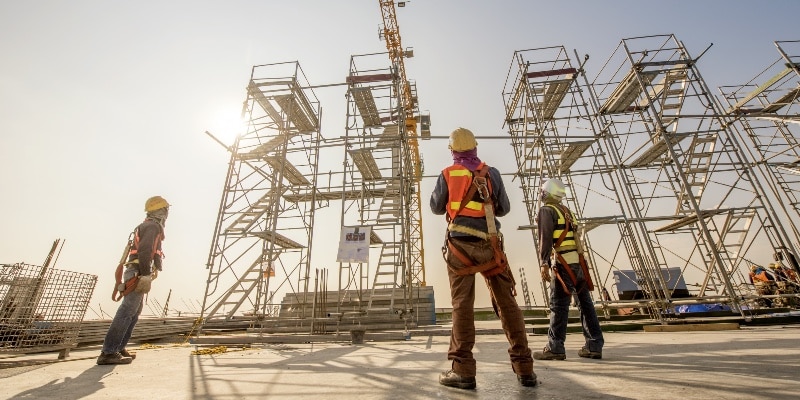One of the hottest topics of the Biden presidency is his massive infrastructure plan. The American Jobs Plan introduces $2 trillion worth of projects aimed at creating jobs and improving the overall quality of the country’s foundation at the federal, state, and local levels. But there are infrastructure benefits that go beyond what is simply outlined in the plan. If spent wisely, the money from the bill could have a positive impact on the country’s health outcomes by addressing the social determinants of health. In doing so, it also stands to chip away at rising healthcare costs.
The socioeconomic and structural conditions in which people live and work have major impacts on Americans’ health. That’s why researchers have taken to calling them “social determinants of health.” Things like secure and safe housing, employment status, access to transportation, and access to quality education all play a significant role in determining how healthy an individual is.
So, how does Biden’s plan come into play? Below, we outline just a few examples of how improvements in the nation’s infrastructure could be mirrored by improvements in health outcomes.
1. Increasing access to affordable housing
Lack of safe and stable housing means not having a space to store necessary medication, facing exposure to the elements, and is associated with a higher risk of chronic health problems and both physical and mental trauma. This helps explain why those who experience homelessness are three times more likely than the general population to go to the emergency room at least once a year, contributing to healthcare costs. In addition, many will go just to guarantee a bed and a meal, knowing that nearly all emergency rooms receive federal funds and cannot turn patients away.
There is already evidence that investment into housing results in both improved health and lowered care costs. For example, United HealthCare launched a program called MyConnections in Arizona, providing 60 patients who formerly had high healthcare costs and were homeless with housing and health coaching. When UnitedHealthcare launched the program, they saw their patients’ health improve while also seeing, in some cases, more than $10,000 in health cost savings per month in less than a year.
Biden’s infrastructure plan specifies $40 billion in new, low-income housing developments, along with over $200 billion to fund necessary improvements to current residential buildings. According to Biden, 2 million homes will be constructed or renovated over the next decade. This could, in turn, improve the health of millions of people across the country facing housing insecurity.
2. Providing more opportunities for employment
According to Moody’s Analytics, the American Jobs Plan is projected to create upwards of 19 million jobs over the next decade, the majority of which will not require a college degree. These jobs range from construction, to transportation, to support for research and development.
Unemployment not only makes it difficult for people to afford preventative healthcare measures and procedures, but is also linked to a number of health concerns beyond what comes with the loss of income. For instance, people facing long-term unemployment are more likely to be diagnosed with depression, or experience stress-related health conditions such as heart attacks or strokes.
These new jobs could give people the opportunity to afford a number of necessary resources like housing, healthy food, childcare, and health insurance. Access to these resources plays a large role in not just preventing poor health, but managing chronic illness, which makes up as much as 86% of the country’s healthcare expenditures.
3. Improving and expanding public transportation
When many people think of infrastructure, they often think of transportation. Unsurprisingly, a significant portion of Biden’s infrastructure plan is dedicated to transportation improvements, from upgrading waterways to improving road safety.
Beyond obvious improvements in safety, access to transportation, particularly public transit, plays an important role in healthcare status. Barriers to transportation can lead to missed medical appointments, delayed care, and an inability to access necessary medications and pharmacies. A lack of reliable transportation can also cut populations off from services tangentially related to health, such as employment and healthy food.
Of particular interest is the $20 billion dollars aimed at connecting neighborhoods “traditionally cut off by investments”. Barriers to transportation disproportionately impact rural and poor communities, particularly communities of color. Investments in transportation could not only make healthcare accessible to a greater percentage of the population, but bring us one step closer towards advancing health equity.
Infrastructure improvements are often pursued as a means to avoid future costs for damage caused by extreme weather, climate change, and overall wear and tear. Healthcare experts have been pushing for this same strategy of prevention—rather than treatment—for years, both as a way to improve overall health status and decrease the ever-climbing healthcare costs.



